Date: February 3 (Fri) - 4 (Sat), 2006
Venue: Seminar Room #4, National Museum of Ethnology, Osaka, Japan
Organizers: KASHINAGA Masao
Languages: English and Japanese (with simultaneous translation)
This symposium is held as a joint effort of a core research project "Textology: An Interdisciplinary Study in the Relations between Man and Text in Historical and Comparative Perspective" and a joint research project "Toward the Creation of Textology" of the National Museum of Ethnology with the joint auspices of the EFEO (E'cole franc,aise d'Extre^me-Orient) and with the financial assistance of the Japan Foundation.
Objectives of the Symposium
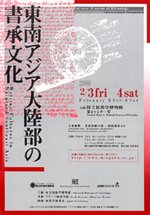 |
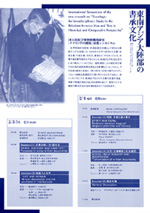 |
Mainland Southeast Asia including the southwestern part of China is a geographical region that encompasses some language groups distributed among numerous ethnic groups. This area is divided by the national boundaries of China, Thailand, Laos, Burma, Vietnam and Cambodia after their formation as nation states in the 20th century. As a result, Chinese characters are coming into wide use regardless of ethnic groups in southwestern China, just as are the Thai (Siamese), Lao, Burmese, Quoc Ngu (that is, the alphabetical writing system of the Vietnamese) and Khmer scripts in Thailand, Laos, Burma, Vietnam and Cambodia respectively. These official scripts have spread mainly as a result of the establishment of modern bureaucratic institutions including school education. However, various writing systems - besides the official writing systems found in each individual country - have been transmitted throughout Mainland Southeast Asia for hundreds of years. Therefore, the process of bringing the national writing systems to the fore in the 20th century should not be regarded as that of a simple transition, from illiteracy to literacy, or from oral tradition to literary culture. Even now, we can find many kinds of signs and symbols carved, written or printed on writing materials such as stone, paper or palm-leaves among many parts of the area. Their contents cover all kinds genres, including religious documents, genealogies, annals, customary laws, literatures, letters and so on. It should be noted that specific writing systems have been transmitted for specific purposes by specific social groups. This regional character has led to the difference between the distribution of language groups and that of writing systems.
This symposium will be organized as part of the core research of the National Museum of Ethnology on "Textology: An Interdisciplinary Study in the Relations between Man and Text in Historical and Comparative Perspective". It aims to highlight how written cultures are embedded in folk societies, with examples focusing on different regions of Mainland Southeast Asia. Contributors to the symposium are researchers dealing with such literary sources as Tham, Tai Dam, Lao and Shan scripts mainly transmitted by the Tai-speaking groups; Cham scripts by the Cham people belonging to the Austronesian speaking groups; Karen scripts by the Karen people of the Tibeto- Burman speaking groups; and the Chinese characters used by the Mien belonging to the Hmong-Mien speaking groups in Northern Thailand. Topics that will be addressed include:
-
material aspects, such as the materials used for writing and printing technology
-
entertainment, such as folk songs and oral traditions
-
religious aspects, such as the relation with Theravada Buddhism, magic and ancestral worship
-
political aspects, such as the national language policies and regional development programs.
Four sessions will be devoted to these themes:
-
Session (1): Spirit, History and Identity: Purposes in using written documents
-
Session (2): Text and Power: Written documents and the positions of intellectuals
-
Session (3): Spirit and Form: Relations between magical/religious practices and literacy
-
Session (4): Roles, Relationship and Recipients: Transmission of written documents
In addition, two keynote lectures from the standpoints of a historian and an ecologist will outline the material and political background of written cultures in Mainland Southeast Asia. These lectures will consider written cultures in this area from both micro and macro viewpoints.
The aim of this symposium is not to apply the examples in Mainland Southeast Asia to a scheme of technical evolution such as the transformation from voice, hand writing, printing, to electronic typing. Rather, it envisions an empirical approach towards understanding the regional character of Mainland Southeast Asia by analyzing the relationship of written documents to their use in the everyday lives of people inhabiting the region.
Program
1st Day: February 3, 2006 (Friday)
|
10:00-10:30 |
Registration |
|---|
|
10:30-10:40 |
Welcoming Speech by TAMURA Katsumi (National Museum of Ethnology) |
|---|
|
10:40-11:00 |
Introduction of Contributors by KASHINAGA Masao (National Museum of Ethnology) |
|---|
|
11:00-11:45 |
Keynote Address (1) |
|---|
Writing Materials from Forests of Mainland Southeast Asia
TAKEDA Shinya
Kyoto University
|
|
11:45-13:30 |
Lunch Break |
|---|
 Session (1) Spirit, History and Identity: purposes in using written documents Session (1) Spirit, History and Identity: purposes in using written documents
Chair: TSUMURA Fumihiko (Fukui Prefectural University)
|
|---|
|
13:30-14:00 |
KASHINAGA Masao (National Museum of Ethnology) |
|---|
The transmission of written genealogies and patrilineal ideology among the Tai Dam
KASHINAGA Masao
National Museum of Ethnology
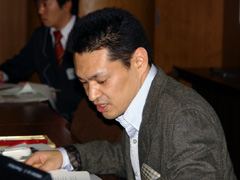 The Tai Dam are one of the Tai-speaking peoples living mainly in the valleys of Northwestern Vietnam. They are known as an ethnic group possessing their own traditional scripts derived from ancient Khmer scripts, even though they are not Theravada Buddhists. More than two thousand manuscripts have already been found or collected in the villages and the libraries of Vietnam, and have been classified as folk songs, literary works, annals, customary laws, divinations, written genealogies, and so on. Most of these manuscripts were written at the beginning of the 20th century when French colonial administrative control over Northwestern Vietnam was established.
In this paper, I will focus on the manuscripts called 'Xo phi huon', the records of the Tai Dam chief's families written at the beginning of the 20th century. The custom of writing 'Xo phi huon' might have been accepted by the Tai Dam chiefs against the background of their political relationship with both the Chinese and Vietnamese dynasties. However, we can find two obvious differences between 'Xo phi huon' among the Tai Dam and the written genealogies typically edited and transmitted among the Chinese lineages in Southeastern China. These are :
1) 'Xo phi huon' are not written in the Chinese characters but in the Tai Dam script.
2) 'Xo phi huon' are known as the written genealogies, but in fact, we find that they merely enumerate surnames and names of the individual dead and do not indicate kin relations such as descent, marriages and siblings.
In this presentation, I will try to explain why and how 'Xo phi huon ' are recognized as written genealogies of families in Tai Dam society by examining the use of them in their ancestral rites and communal ceremonies. I will also consider the relation between descent recognition and the patrilineal ideology of the Tai Dam.
KASHINAGA Masao, is an Assistant Professor of the Department of social Research, National Museum of Ethnology. He carried out intensive fieldwork in a tai-Dam village in Northwestern Vietnam, focusing on the relationship between the market economy and local practices that are locally-recognized as being 'traditional' or 'cultural'. His publications include "Literacy of a Minority People: Changes in the Scripts of Tai Dam Language in Vietnam" (2000)[in Japanese] and "Genealogies of Lo Cam Family in Muang Muak "(2003)[in Vietnamese and Tai Dam].
|
|
14:00-14:30 |
BABA Yuji (Mie Prefectural Collage of Nursing) |
|---|
|
|
Interpretation of Migration History in Rural Development Age:
Written Documents and Other Historical Sources
BABA Yuji
Mie Prefectural Collage of Nursing
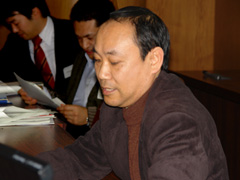 This paper focuses on historical expressions in the changing process of worshiping guardian spirits together by 3 Tai-Lue villages in Nan province, Northern Thailand. Their migration history has been remade based on the situation of rural development competition, especially N and D village.
They have an old written document in Tai-Lue script (Tham script) which expresses their history of migration from their original place, Sipsong Panna. When the statue of guardian spirit was built in N village in 1984, a commemorative publication was issued. It included the migration history translated into modern Thai from the old written documents. It is a rewritten version expressing history from the standpoint of N village. In the 1990's many historical monuments appeared one after another in an opposing movement by D village.
|
|---|
|
14:30-14:45 |
Comments |
|---|
|
|
OGURO Shunji

(1) Professor, Graduate School of Literature and Human Sciences, Osaka City University
(2) History of Medieval Italy
(3) Recent Publications:
2001 Beyond the Written Word. Vernacular Sermon Collections in Fifteenth Century Florence, in Maekawa Kazuya (ed.), Social History of Communication, Kyoto, pp.139-168. [in Japanese]
2002 Umbra respectu vive vocis. An Introduction to Medieval Sermon Sources, in Jinbun Kenkyu Studies in the Humanities. Bulletin of the Graduate School of Literature and Human Sciences Osaka City University 54-2:55-86. [in Japanese]
|
|---|
|
14:45-15:15 |
Questions and Discussions |
|---|
|
15:15-15:45 |
Coffee Break |
|---|
 Session (2) Text and Power: Written documents and the positions of intellectuals Session (2) Text and Power: Written documents and the positions of intellectuals
Chair: IIJIMA Akiko (Tenri University)
|
|---|
|
15:45-16:15 |
Isra Yanatan (Nagoya University) |
|---|
|
|
Publication in Tai Scripts and Tai intellectuals in Sipsongpanna
Isra Yanatan
Nagoya University
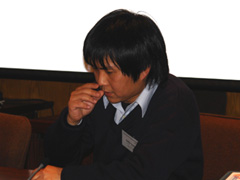 "Tham script" has been widely used in areas of four countries, namely Thai, Laos, China, Burma, where Tai speaking peoples inhabit. In this paper I examine how Tai script of Sipsongpanna Tai Autonomous State in China, a variation of Tham script, has been manipulated by different groups since Sipsongpanna was incorporated into People's Republic of China in 1950s. During the Cultural Revolution period, Tai script was prohibited to read and write but it was revived since China changed the cultural policy against minorities nationalities in the beginning of 1980s.
I especially pay attention to Tai script in print. Almost of all books printed in Tai script in 1980s were published by Yunnan Nationality Publishing Company, which reflected the nationality policies of central government. Most books were concerning of Tai literature, that is, books for amusement without direct relationship to politics.
Since the former half of 1990s, however, they begin to publish books in Tai script also in Sipsongpanna Tai Autonomous State. I examine how Tai intellectuals have related to the publication of the books in Sipsongpanna.
|
|---|
|
16:15-16:45 |
IKEDA Kazuto (University of Tokyo) |
|---|
|
|
Language, Written Tradition, and History among the Karens in the Late Colonial Burma
IKEDA Kazuto
University of Tokyo
 The Karen of Burma is a people who include, according to a recent study, more than forty linguistic subgroups, with Sgaw and Pwo as two major groups. Along with this linguistic diversity they have developed several distinct script systems such as Sgaw mission and Sgaw monastic scripts for Sgaw, Pwo mission, Pwo monastic, and Leke scripts for Pwo, and Pao script for Pao. Each seems to play a crucial part of the various Karen cultural movements of the present days. There is also an attempt by Sgaw and Pwo Christians to create a new script system applicable to both of the languages, and it clearly intends to revive their ethnic culture and to strengthen their social ties as Karen. These tendencies were, however, perhaps uncommon among the Karens in the colonial Burma.
Three versions of the Karen history book were written by Sgaw and Pwo Karen authors, and published in the last decade of the colonial era in Burma. In those publications, U Pyinnya's "Kayin Yazawin (The Karen Chronicle)" (1929) and U Saw's "Kuyin Maha Yazawin-dawgyi (The Karen Great Chronicle)" (1931) were written in Burmese with Burmese script, whereas Saw Aung Hla's "Pgakanyaw Alidasisoteso (The Karen History)" (1939) was produced in Sgaw with Sgaw mission script. The former two texts do not necessarily adhere to the linguistic features of the Pwos, their unique script systems, and other ethnic aspects, which are widely accepted as indispensable elements for the current Pwo Karen culture. Furthermore, they even start their inquiry into the origin of the name of the people, which has been customarily indicated as Karen in English, not from Pgakanyaw in Sgaw or Phlong in Pwo, but from Kayin in Burmese and subsequently reach its Pali-Buddhistic derivations.
In this presentation, I will examine the notions of the Karen-ness with particular reference to language and written tradition in those three versions of the Karen history, and then attempt to locate them in the social contexts of the colonial Burma.
Kazuto IKEDA is currently Ph.D. Candidate at Graduate School of Arts and Sciences, University of Tokyo. He was Research Fellow at Universities Historical Research Center, Yangon University from 2001 to 2004. His research interests include ethnic identity formation of the Karens of colonial Burma, political and social history of the Karen nationalist movements and so on.
|
|---|
|
16:45-17:15 |
MURAKAMI Tadayoshi (Osaka University of Foreign Studies) |
|---|
|
|
Lik Long ("The Great Books") and their Uses:
the Role of Intellectuals and their Works in Shan Culture
MURAKAMI Tadayoshi
Osaka University of Foreign Studies
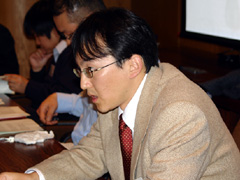 Lik Long Lik Long, "The Great Books (Manuscripts)," are the Buddhist writings, which have been inherited among the Shan in a manuscript form (and in print in recent years) and recited for the audience in some Buddhist rites and festivals. Lik Long are also offered to Buddhist temples for merit making. From the 19th century until the early 20th century, some distinguished intellectuals appeared in Shan States and left many works, especially commentaries on Buddhist texts and instructive stories adapted from Jataka. These intellectuals are praised as Khu Mo Lik Tai, "Master of Shan Literature," and their works are esteemed as the essence of Shan literate culture. Most Lik Long that can be seen today are the work of these masters.
Transcription and recitation of these Lik Long are conducted by Cale, "Scribe," who are also intellectuals in their respective regions. They have enough literal knowledge of Shan, Burmese and Pali as well as expert knowledge on Buddhism to read and transcribe Lik Long. In addition to their literary capability, Cale are also required to have a "good voice" for reciting Lik Long. In other words, Cale are experts in both literacy and orality. The goal of this research is to analyze the role of intellectuals and their works in Shan culture by examining biographies of the distinguished Shan intellectuals, Ku Mo Lik Tai, and their works and assessing the way Cale inherit and use those works.
MURAKAMI Tadayoshi (Ph.D. in Cultural Anthropology) is an an Associate Professor of Thai Section, Division of Southeast Asian and Oceanian Studies, Department of Area Studues, Osaka University of Foreign Studies. His main research interest is Culture and Society of Shan in Thailand and Burma (Myanmar) . His publication include "Literacy and Ethnic Identity among the Shan: Comparative Study of Shan Literacy in Myanmar and Thailand" (2002) Rekishi Jinrui (History and Anthropology), Institute of History and Anthropology, University of Tsukuba, No.30. pp.79-112. [in Japanese]
|
|---|
|
17:15-17:30 |
Comentater: ITAGAKI Ryuta |
|---|
|
|
ITAGAKI Ryuta
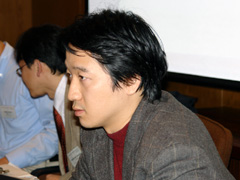
(1) Lecturer, Department of Social Studies, Doshisha University
(2) Social History of Modern Korea
(3) Recent Publications:
2000 Bureaucracy and Villages in Nongch'on-chinheung-undong - With a Focus on Documentationalism in Chosen Gakuho (Journal of the Academic Association of Koreanology in Japan) 175:1-42. [in Japanese]
2002 Local Society and Primary Schools in Colonial Korea : Focusing on a School in Sangju, North Kyongsang Province, in Chosenshi-kenkyukai Ronbunshu (Bulletin of Society for Study in Korean History) 40: 247-275. [in Japanese]
|
|---|
|
17:30-18:00 |
Questions and Discussions |
|---|
|
18:10- |
Welcoming Party |
|---|
2nd Day: February 4, 2006 (Saturday)
|
9:30-10:00 |
Registration |
|---|
|
10:00-10:45 |
Keynote Address (2) |
|---|
|
|
Scripts and History: the case of the Lao Kingdom of Lan Xang
Michel LORRILLARD
EFEO in Vientiane
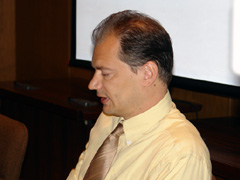 This paper traces the diffusion of Lao scripts by taking stock of the oldest inscriptions found in Laos. Their different styles and methods of writing are analysed and compared to other Tai scripts. The results show that the appearance of scripts in Laos is closely related to the diffusion of Lan Na Culture and Buddhism. Now that there is a substantial inventory of lao inscriptions, it is possible to recognise the ways both secular and religious writings spread into the territory of the former Kingdom of Lan Xang, and to understand the processes that led to their actual formation.
|
|---|
 Session (3) Spirit and Form: Relations between magical/religious practices and literacy Session (3) Spirit and Form: Relations between magical/religious practices and literacy
Chair: BABA Yuji (Mie Prefectural College of Nursing)
|
|---|
|
10:45-11:15 |
TSUMURA Fumihiko (Fukui Prefectural University) |
|---|
|
|
Tham scripts and Bailan in a modern Isan Village
TSUMURA Fumihiko
Fukui Prefectural University
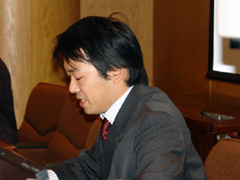 This presentation focuses on the modern use of palm leaf books, bailan, and Tham scripts in the rural life of the Northeastern Thailand, from an anthropological viewpoint. The studies of these old scripts, referred to as akson boran, were undertaken in Thailand in the fields of history or literature. However, most villagers use the palm leaves and old scripts merely as "tools," consciously or unconsciously misreading and misinterpreting their literal meanings. Therefore, I attempt to analyze the knowledge contained in the bailan and Tham scripts as a tool for understanding the bodiness and religious consciousness of the villagers. The usefulness of this knowledge is not limited to only the village intellectuals, such as the monks, but also in a general sense, to the villagers. This study aims to shed light on the knowledge surrounding bailan and Tham scripts, which is related to the bodiness and religious beliefs, in the various contexts of the village.
After an introduction to the modern history of the post-19th century scripts, I examine the data related to the bailan and Tham scripts in some villages of Northeastern Thailand. Some monks and ritual practitioners in these villages are able to read and write such old scripts; however, the extent of their knowledge and use varies. The interest in old scripts appears to be decreasing in these villages, although some villagers are becoming increasingly interested in them, particularly in the herbal descriptions provided in the bailan and in local knowledge, which is useful for regional promotion and motivated by political concerns. The old scripts are not only read or written in static language but are also used as tools at various levels and have the potential to connect traditional bodiness with regional consciousness.
Fumihiko TSUMURA, is a lecturer at Center for Arts and Sciences of Fukui Prefectural University. His research deals with the local knowledge in the contexts of modern rural village in Northeastern Thailand. He is currently working of the issues of spirit cults, herbal medicine, and the demarcation between science and magic in rural contexts. His publications include "Anthropological Study of Traditional Script and Knowledge in Northeastern Thailand" (2002) The Journal of Thai Studies no.2, Osaka: The Japanese Society of Thai Studies. [in Japanese] and "'Modern' Mode of 'Traditional' Herbal Practitioner in Northeast Thailand" (2005) Journal of Fukui Prefectural University no.26, Fukui: Fukui Prefectural University. [in Japanese].
|
|---|
|
11:15-11:45 |
Peter KORET (EFEO in Vientiane, Literature) |
|---|
|
|
The Magic of Writing in Traditional Lao Literature
Peter KORET
Ecole française d'Extrême-Orient
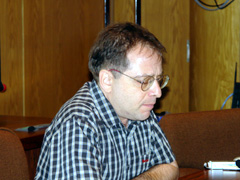 My paper is a study of the cultural context of writing and literary scripts in traditional Lao literature. It examines how both intentionally and unintentionally the written medium has served to shape an audience's perception of both individual literary works and the very concept of literature itself. A major focus of this study is the investigation of the close relationship between the written medium of the literature and its status as a 'sacred Buddhist' and 'supernatural' tradition.
Peter Koret is currently working in Laos on a research project involving Lao Buddhist Millenarian literature. He has worked as a visiting assistant professor at the University of California Berkeley, teaching courses on Buddhism and culture in Southeast Asia, and literature at Arizona State University. His major research lies in the traditional literature of the Lao. Publications include 'The Invention of Lao Literature as an Academic Subject of Study' in Laos: Culture and Society, edited by Grant Evans Books of Search: 'Convention and Creativity in Lao Literature' in 'The Literary Canon in Southeast Asia', edited by David Smith, and a forthcoming book on the Lao Poem Leup Phasun and its twentieth century interpretation.
|
|---|
|
11:45-12:00 |
Comments |
|---|
|
|
IIJIMA Akiko

(1) Professor, Faculty of International Culture Studies, Tenri University
(2) Social and cultural histories in northern mainland Southeast Asia with a particular focus on history of Tai peoples
(3) Recent Publications:
2003 The Nyuan in Xayabury and Cross-Border Links to Nan, Christopher E. Goscha and Soren Ivarsson (ed.), Contesting Visions of the Lao Past, Copenhagen: NIAS Press, pp. 165-180. [in English]
2003 The Manuscripts Culture in Muang Sing, Laos, Institute of Cultural Researches of Laos, Ministry of Information and Culture, Lao P.D.R. (ed), Introduction to Lao Studies, Tokyo: Mekong Publisher, pp. 493-520. [in Japanese]
|
|---|
|
12:00-12:30 |
Questions and Discussions |
|---|
|
12:30-14:00 |
Lunch Break |
|---|
 Session (4) Roles, Relationship and Recipients: Transmission of written documents Session (4) Roles, Relationship and Recipients: Transmission of written documents
Chair: MURAKAMI Tadayoshi (Osaka University of Foreign Studies)
|
|---|
|
14:00-14:30 |
YOSHINO Akira (Tokyo Gakugei University) |
|---|
|
|
The functions of Chinese literacy in the Iu Mien society of Northern Thailand
YOSHINO Akira
Tokyo Gakugei University
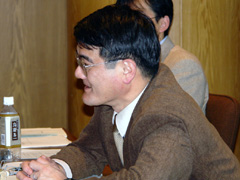 The Iu Mien society accepted the Chinese writing system and has since used the system for preparing its ritual and secular documents. The Iu Mien priests chant verses from their sacred book that is written in Chinese and also write their prayers in Chinese. In the past, contractual agreements between parties were also prepared in Chinese
Chinese literacy has continued among the members of the Iu Mien community in China and Southeast Asia for a long time. In the past, they often hired Han Chinese teachers to teach their boys to read and write in Chinese. This educational arrangement was the same as that of a temporary private school. This form of teaching has also been accepted in China, Laos and Thailand.
The ability to read and write in Chinese was regarded as one of the standards of social status in the Iu Mien society. At present, due to the spread of school education in the highlands of Thailand and also because very few boys learn Chinese in reality, Chinese literacy no longer functions as a standard for determining the social status in the Iu Mien society in Thailand. However, it functions as an ethnic symbol of the Iu Mien in Thailand. This tendency is observed in certain Iu Mien cultural education projects in Thailand, in which the instruction of reading and writing Chinese is the first course for imparting knowledge on the Iu Mien culture.
YOSHINO Akira is a professor of social anthropology at Tokyo Gakugei University. He has mainly researched the social organisation, ethnicity, ancestor worship and the ecological adaptation of the Iu Mien of Northern Thailand for nineteen years. He has also conducted his fieldwork on the ethnic identity of the Iu Mien in Guangdong and Guangxi in China. In recent years, his research has focused on labour migration and the increase of nuclear family households in the Iu Mien society.
|
|---|
|
14:30-15:00 |
SHINE Toshihiko (Tokyo University of Foreign Studies) |
|---|
|
|
The symbolic role of the literacy as a standard to distinguish the Raglai from the Cham in Vietnam
SHINE Toshihiko
Tokyo University of Foreign Studies
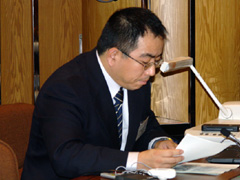 The Raglai, Churu, and Hroi and most Malay speakers of the Montagnards [Vietnam's Central Highlanders] have the same language, folklore, culture, and pantheon with the Cham. The Raglai people don't really have a history of literature. In their tradition the Cham teach their writing under the master-pupil system through their Ahier and Awar specialist, religious, 'priest' groups. These privileged status groups monopolized the role of the religious specialist, the administrative officials, and the teachers and authors of literature within Cham society. One, and possibly the only way, to distinguish Cham villages from Raglai villages is the presence of these classes of people and literature. After the destruction of the Cham Kingdom in 1835 through a peoples revolt many of the Cham fled the coast to the interior, especially those of the status classes. Most common Cham people were illiterate, depending on the 'priest' classes to teach, interpret, and use the literature in ritual.
Without the presence of these educating literate classes, by the time of the arrival of French colonialists in the 1880s, many former Cham villages had seemingly disappeared from the map, being now designated Raglai or reclassified as Raglai. The loss of a literature is central to this change of identity both within and from without the society.
I want to contribute to some research of the reality of the symbolic role of the religious literacy in the Cham community and their neighbours.
|
|---|
|
15:00-15:15 |
Comments |
|---|
|
|
KAYA Noriko
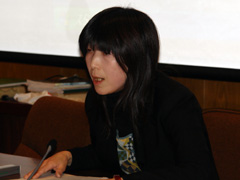
(1) Professor, Department of Art Education, Osaka University of Education
(2) East Asian Aesthetics
(3) Recent Publications:
2000 The Horizon of Calligraphic Art: Its History and Interpretation in China and Japan, Osaka University Press, pp.1-274. [in Japanese]
2004 Changes in Japanese 'Modern' Calligraphy, in Aesthetics: Looking at Japanese Culture11: 68-74.
|
|---|
|
15:15-15:45 |
Questions and Discussions |
|---|
|
15:45-16:15 |
Coffee Break |
|---|
 Session (5) "General Discussion" Session (5) "General Discussion"
Comentater: ZAHA Tamami
|
|---|
|
16:15-16:30 |
Comments |
|---|
|
|
ZAHA Tamami (Asia-Pacific Cultual Centre for UNESCO)
 She is a Programme Assistant of the Education Division, the Asia/Pacific Cultural Centre for UNESCO (ACCU), whose major job responsibility is management of the Package Learning Materials on Environment (PLANET) project. She majored in International Education for her first and second degrees, especially focusing on literacy and Non-formal Education. Among her various activities such as internships with United Nations Children's Fund (UNICEF) Bhutan Office, Japan International Cooperation Agency (JICA) Ethiopia Office, and Dhaka Ahsania Mission (DAM, a local NGO in Bangladesh), her undergraduate dissertation based on her fieldwork in Akha villages in the Northern Thailand, focusing on education for hilltribes, addressed the issue of an educational dilemma they face in the majority Thai society.
|
|---|
|
16:30-17:15 |
General Comment |
|---|
|
|
Christian DANIELS

(1) Professor, Research Institute for Languages and Cultures of Asia and Africa, Tokyo University of Foreign Studies
(2) History of Chinese Technology, Ming/Qing
(3) Recent Publications:
Co-edited, 2003 Cultural Traditions and Technologies for Daily Life in Sichuan, Tokyo: Keiyusha. pp468. [in Japanese]
2002 The border between Southeast Asia and East Asia from the historical perspective of the Tai cultural sphere, in Nakami Tatsuo (ed.), Beyond the Borders: From the viewpoint of the peripheral areas of East Asia, Tokyo: Yamakawa Shuppansha, pp.137-189. [in Japanese]
|
|---|
|
17:15-17:55 |
General Questions and Discussions |
|---|
|
17:55-18:00 |
Concluding Remarks by KASHINAGA Masao |
|---|


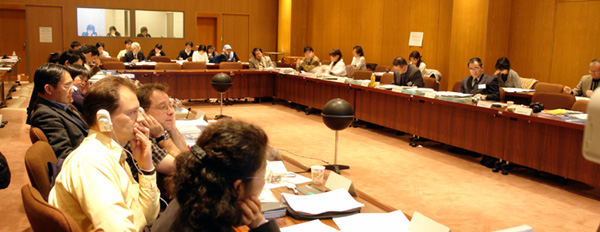
Contact
KASHINAGA Masao
TEL:06-6876-2151 (ext: 8356) / E-mail




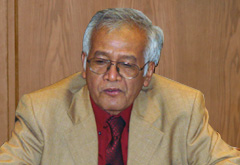
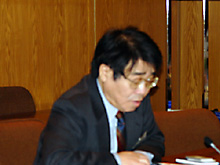
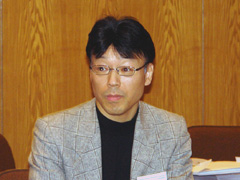
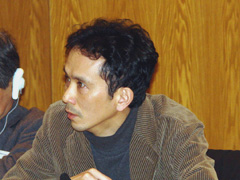



 The Tai Dam are one of the Tai-speaking peoples living mainly in the valleys of Northwestern Vietnam. They are known as an ethnic group possessing their own traditional scripts derived from ancient Khmer scripts, even though they are not Theravada Buddhists. More than two thousand manuscripts have already been found or collected in the villages and the libraries of Vietnam, and have been classified as folk songs, literary works, annals, customary laws, divinations, written genealogies, and so on. Most of these manuscripts were written at the beginning of the 20th century when French colonial administrative control over Northwestern Vietnam was established.
The Tai Dam are one of the Tai-speaking peoples living mainly in the valleys of Northwestern Vietnam. They are known as an ethnic group possessing their own traditional scripts derived from ancient Khmer scripts, even though they are not Theravada Buddhists. More than two thousand manuscripts have already been found or collected in the villages and the libraries of Vietnam, and have been classified as folk songs, literary works, annals, customary laws, divinations, written genealogies, and so on. Most of these manuscripts were written at the beginning of the 20th century when French colonial administrative control over Northwestern Vietnam was established. This paper focuses on historical expressions in the changing process of worshiping guardian spirits together by 3 Tai-Lue villages in Nan province, Northern Thailand. Their migration history has been remade based on the situation of rural development competition, especially N and D village.
This paper focuses on historical expressions in the changing process of worshiping guardian spirits together by 3 Tai-Lue villages in Nan province, Northern Thailand. Their migration history has been remade based on the situation of rural development competition, especially N and D village.
 "Tham script" has been widely used in areas of four countries, namely Thai, Laos, China, Burma, where Tai speaking peoples inhabit. In this paper I examine how Tai script of Sipsongpanna Tai Autonomous State in China, a variation of Tham script, has been manipulated by different groups since Sipsongpanna was incorporated into People's Republic of China in 1950s. During the Cultural Revolution period, Tai script was prohibited to read and write but it was revived since China changed the cultural policy against minorities nationalities in the beginning of 1980s.
"Tham script" has been widely used in areas of four countries, namely Thai, Laos, China, Burma, where Tai speaking peoples inhabit. In this paper I examine how Tai script of Sipsongpanna Tai Autonomous State in China, a variation of Tham script, has been manipulated by different groups since Sipsongpanna was incorporated into People's Republic of China in 1950s. During the Cultural Revolution period, Tai script was prohibited to read and write but it was revived since China changed the cultural policy against minorities nationalities in the beginning of 1980s. The Karen of Burma is a people who include, according to a recent study, more than forty linguistic subgroups, with Sgaw and Pwo as two major groups. Along with this linguistic diversity they have developed several distinct script systems such as Sgaw mission and Sgaw monastic scripts for Sgaw, Pwo mission, Pwo monastic, and Leke scripts for Pwo, and Pao script for Pao. Each seems to play a crucial part of the various Karen cultural movements of the present days. There is also an attempt by Sgaw and Pwo Christians to create a new script system applicable to both of the languages, and it clearly intends to revive their ethnic culture and to strengthen their social ties as Karen. These tendencies were, however, perhaps uncommon among the Karens in the colonial Burma.
The Karen of Burma is a people who include, according to a recent study, more than forty linguistic subgroups, with Sgaw and Pwo as two major groups. Along with this linguistic diversity they have developed several distinct script systems such as Sgaw mission and Sgaw monastic scripts for Sgaw, Pwo mission, Pwo monastic, and Leke scripts for Pwo, and Pao script for Pao. Each seems to play a crucial part of the various Karen cultural movements of the present days. There is also an attempt by Sgaw and Pwo Christians to create a new script system applicable to both of the languages, and it clearly intends to revive their ethnic culture and to strengthen their social ties as Karen. These tendencies were, however, perhaps uncommon among the Karens in the colonial Burma. Lik Long, "The Great Books (Manuscripts)," are the Buddhist writings, which have been inherited among the Shan in a manuscript form (and in print in recent years) and recited for the audience in some Buddhist rites and festivals. Lik Long are also offered to Buddhist temples for merit making. From the 19th century until the early 20th century, some distinguished intellectuals appeared in Shan States and left many works, especially commentaries on Buddhist texts and instructive stories adapted from Jataka. These intellectuals are praised as Khu Mo Lik Tai, "Master of Shan Literature," and their works are esteemed as the essence of Shan literate culture. Most Lik Long that can be seen today are the work of these masters.
Lik Long, "The Great Books (Manuscripts)," are the Buddhist writings, which have been inherited among the Shan in a manuscript form (and in print in recent years) and recited for the audience in some Buddhist rites and festivals. Lik Long are also offered to Buddhist temples for merit making. From the 19th century until the early 20th century, some distinguished intellectuals appeared in Shan States and left many works, especially commentaries on Buddhist texts and instructive stories adapted from Jataka. These intellectuals are praised as Khu Mo Lik Tai, "Master of Shan Literature," and their works are esteemed as the essence of Shan literate culture. Most Lik Long that can be seen today are the work of these masters.
 This paper traces the diffusion of Lao scripts by taking stock of the oldest inscriptions found in Laos. Their different styles and methods of writing are analysed and compared to other Tai scripts. The results show that the appearance of scripts in Laos is closely related to the diffusion of Lan Na Culture and Buddhism. Now that there is a substantial inventory of lao inscriptions, it is possible to recognise the ways both secular and religious writings spread into the territory of the former Kingdom of Lan Xang, and to understand the processes that led to their actual formation.
This paper traces the diffusion of Lao scripts by taking stock of the oldest inscriptions found in Laos. Their different styles and methods of writing are analysed and compared to other Tai scripts. The results show that the appearance of scripts in Laos is closely related to the diffusion of Lan Na Culture and Buddhism. Now that there is a substantial inventory of lao inscriptions, it is possible to recognise the ways both secular and religious writings spread into the territory of the former Kingdom of Lan Xang, and to understand the processes that led to their actual formation. This presentation focuses on the modern use of palm leaf books, bailan, and Tham scripts in the rural life of the Northeastern Thailand, from an anthropological viewpoint. The studies of these old scripts, referred to as akson boran, were undertaken in Thailand in the fields of history or literature. However, most villagers use the palm leaves and old scripts merely as "tools," consciously or unconsciously misreading and misinterpreting their literal meanings. Therefore, I attempt to analyze the knowledge contained in the bailan and Tham scripts as a tool for understanding the bodiness and religious consciousness of the villagers. The usefulness of this knowledge is not limited to only the village intellectuals, such as the monks, but also in a general sense, to the villagers. This study aims to shed light on the knowledge surrounding bailan and Tham scripts, which is related to the bodiness and religious beliefs, in the various contexts of the village.
This presentation focuses on the modern use of palm leaf books, bailan, and Tham scripts in the rural life of the Northeastern Thailand, from an anthropological viewpoint. The studies of these old scripts, referred to as akson boran, were undertaken in Thailand in the fields of history or literature. However, most villagers use the palm leaves and old scripts merely as "tools," consciously or unconsciously misreading and misinterpreting their literal meanings. Therefore, I attempt to analyze the knowledge contained in the bailan and Tham scripts as a tool for understanding the bodiness and religious consciousness of the villagers. The usefulness of this knowledge is not limited to only the village intellectuals, such as the monks, but also in a general sense, to the villagers. This study aims to shed light on the knowledge surrounding bailan and Tham scripts, which is related to the bodiness and religious beliefs, in the various contexts of the village. My paper is a study of the cultural context of writing and literary scripts in traditional Lao literature. It examines how both intentionally and unintentionally the written medium has served to shape an audience's perception of both individual literary works and the very concept of literature itself. A major focus of this study is the investigation of the close relationship between the written medium of the literature and its status as a 'sacred Buddhist' and 'supernatural' tradition.
My paper is a study of the cultural context of writing and literary scripts in traditional Lao literature. It examines how both intentionally and unintentionally the written medium has served to shape an audience's perception of both individual literary works and the very concept of literature itself. A major focus of this study is the investigation of the close relationship between the written medium of the literature and its status as a 'sacred Buddhist' and 'supernatural' tradition.
 The Iu Mien society accepted the Chinese writing system and has since used the system for preparing its ritual and secular documents. The Iu Mien priests chant verses from their sacred book that is written in Chinese and also write their prayers in Chinese. In the past, contractual agreements between parties were also prepared in Chinese
The Iu Mien society accepted the Chinese writing system and has since used the system for preparing its ritual and secular documents. The Iu Mien priests chant verses from their sacred book that is written in Chinese and also write their prayers in Chinese. In the past, contractual agreements between parties were also prepared in Chinese The Raglai, Churu, and Hroi and most Malay speakers of the Montagnards [Vietnam's Central Highlanders] have the same language, folklore, culture, and pantheon with the Cham. The Raglai people don't really have a history of literature. In their tradition the Cham teach their writing under the master-pupil system through their Ahier and Awar specialist, religious, 'priest' groups. These privileged status groups monopolized the role of the religious specialist, the administrative officials, and the teachers and authors of literature within Cham society. One, and possibly the only way, to distinguish Cham villages from Raglai villages is the presence of these classes of people and literature. After the destruction of the Cham Kingdom in 1835 through a peoples revolt many of the Cham fled the coast to the interior, especially those of the status classes. Most common Cham people were illiterate, depending on the 'priest' classes to teach, interpret, and use the literature in ritual.
The Raglai, Churu, and Hroi and most Malay speakers of the Montagnards [Vietnam's Central Highlanders] have the same language, folklore, culture, and pantheon with the Cham. The Raglai people don't really have a history of literature. In their tradition the Cham teach their writing under the master-pupil system through their Ahier and Awar specialist, religious, 'priest' groups. These privileged status groups monopolized the role of the religious specialist, the administrative officials, and the teachers and authors of literature within Cham society. One, and possibly the only way, to distinguish Cham villages from Raglai villages is the presence of these classes of people and literature. After the destruction of the Cham Kingdom in 1835 through a peoples revolt many of the Cham fled the coast to the interior, especially those of the status classes. Most common Cham people were illiterate, depending on the 'priest' classes to teach, interpret, and use the literature in ritual.
 She is a Programme Assistant of the Education Division, the Asia/Pacific Cultural Centre for UNESCO (ACCU), whose major job responsibility is management of the Package Learning Materials on Environment (PLANET) project. She majored in International Education for her first and second degrees, especially focusing on literacy and Non-formal Education. Among her various activities such as internships with United Nations Children's Fund (UNICEF) Bhutan Office, Japan International Cooperation Agency (JICA) Ethiopia Office, and Dhaka Ahsania Mission (DAM, a local NGO in Bangladesh), her undergraduate dissertation based on her fieldwork in Akha villages in the Northern Thailand, focusing on education for hilltribes, addressed the issue of an educational dilemma they face in the majority Thai society.
She is a Programme Assistant of the Education Division, the Asia/Pacific Cultural Centre for UNESCO (ACCU), whose major job responsibility is management of the Package Learning Materials on Environment (PLANET) project. She majored in International Education for her first and second degrees, especially focusing on literacy and Non-formal Education. Among her various activities such as internships with United Nations Children's Fund (UNICEF) Bhutan Office, Japan International Cooperation Agency (JICA) Ethiopia Office, and Dhaka Ahsania Mission (DAM, a local NGO in Bangladesh), her undergraduate dissertation based on her fieldwork in Akha villages in the Northern Thailand, focusing on education for hilltribes, addressed the issue of an educational dilemma they face in the majority Thai society.




